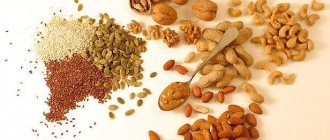Source of bromine for the body
Bromine is a fairly common trace element that a person can consume daily without even realizing it. Bromine is found in:
- pasta products;
- nuts: chickpeas (Turkish nuts), peanuts, cashews, almonds and hazelnuts;
- legumes and grain food products.
Much less bromine can be found in fish and dairy products.
Why is it needed?
Bromine is able to regulate the balance between the processes of excitation and inhibition in the cerebral cortex. It enhances inhibition and inhibits electrical excitation of nerve cells, accumulating on their lipid membrane. That is why bromine is included in medications that have a general calming effect
.
In addition, bromine is a competitor of iodine in the human body. It regulates the supply of iodine
to the thyroid gland and protects the body from excess secretion of the thyroid hormone - thyroxine.
The activity of the adrenal glands under the influence of bromine, on the contrary, increases. Bromine is involved in the production of certain enzymes, such as lipase, which breaks down fats, and amylase, which helps digest starches. This improves nutrient absorption
. This substance is also involved in the process of hematopoiesis.
Bromine dosages
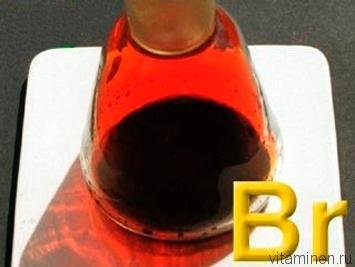
As mentioned above, the daily requirement of bromine is from 3 to 8 mg, although a person consumes on average about 1 mg per day with a balanced diet. Thus, it is recommended to structure your daily diet so that the presence of bromine-containing foods in it exceeds all other foods.
Despite the fact that bromine is very necessary for the body, it is also important to understand that it is very easy to get an excess of this trace element. 35 mg of bromine is a dose that can be fatal. Even if you have excess bromine, you urgently need to take laxatives that will remove it from the body without any problems.
Bromine and the thyroid gland
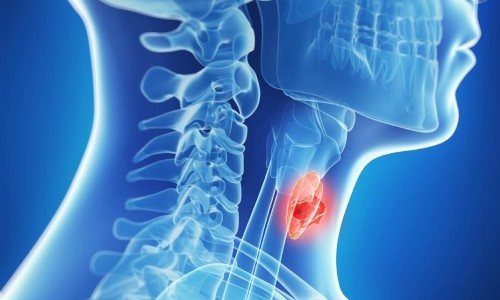
Given that the trace mineral is part of the halogen family and competes for the same receptors used to uptake iodine, it is considered an endocrine disruptor. This makes the compound potentially dangerous to the human body. Bromine inhibits the binding of iodine ions, which leads to inhibition of the synthesis of thyroid hormones and suppression of thyroid function. The result is hypothyroidism.
It would seem that people who have increased levels of production of the hormones triiodothyronine and thyroxine do not need to worry about bromine, since the greater its intake, the less iodine in the body. However, this is not quite true. Iodine deficiency causes diffuse toxic goiter. This condition is characterized by an increase in size of the thyroid gland, which due to this tries to “catch” more of the missing element.
An overdose of bromine suppresses the process of “capturing” iodine by the body, which is needed to maintain water-salt balance, stimulate brain activity, metabolize proteins, fats, carbohydrates, regulate body temperature, and strengthen the immune system. As a result, it replaces the mineral in all organs and tissues. Displacement of iodine from the body increases the risk of developing autoimmune diseases and cancer of the ovaries, prostate, breast, and thyroid glands.
Interaction of bromine with other substances
To absorb bromine, the following substances are required: iodine, chlorine or fluorine. The component creates unstable connections with them. Thanks to the microelement, the increased concentration of these substances in the body can be reduced. At the same time, bromine does not react in any way with nitrogen and oxygen. When bromine is exposed to metals, bromides are formed.
Bromine is an essential trace element for human health. However, exceeding normal dosages quickly causes poisoning and bromism. One of the main properties of the substance - inhibition of excitation - is still used in medicine to combat neuroses and depression. However, high concentrations of bromine-based drugs have many side effects and undesirable consequences.
What is the difference between bromine water and bromine: composition
When dissolving, the element we are considering triggers oxidation reactions, which lead to a disproportionate release of bromide and hypobromite - in accordance with the pattern presented below:
Br2 + H2O → BrO- + Br- + 2H+
This continues with the same unequal formation of bromate and bromide - as follows:
3Br2 + 6OH → BrO3- + 5 Br- + 3H2O
The behavior of the acids present determines the storage conditions. This product must be kept in a darkened glass container and not exposed to light. If you neglect these rules and expose the liquid to direct sunlight (or heat), this will provoke the release of oxygen. What happens to bromine water in this case? It not only loses its useful characteristics, but also begins to emit HBr gas, the vapors of which are poisonous and have a very unpleasant smell.
Where is bromine hidden inside us?

Bromine accumulates in the kidneys and thyroid gland.
It is predominantly concentrated in organs such as the kidneys, thyroid gland, pituitary gland, as well as in the blood, muscles and bone tissue. It is very important to regularly replenish reserves of this trace element, since in its natural form it is easily removed from the body through urination and sweating.
Of course, the best sources of any nutrients are fresh plant foods, because nature has already taken care of everything in the best possible way. And bromine in products in this case is no exception.
Back to contents
What foods contain bromine?
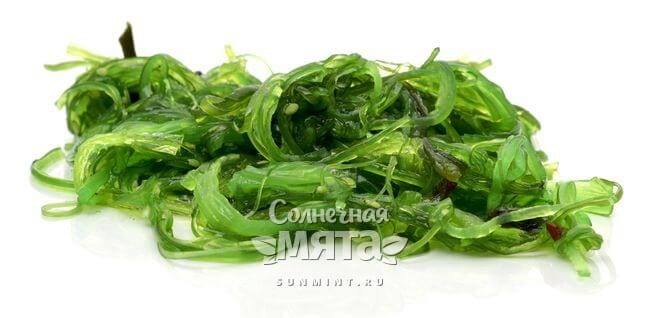
Algae is one of the natural sources of bromine.
This mineral is widely distributed in nature - in sea water, in salt lakes, in underground springs, in rocks and even in the atmosphere, and therefore it is not difficult for some plants to accumulate it.
This is why foods rich in bromine are mostly of plant origin. Among the cereals, wheat and barley are distinguished. I would advise you not to purchase store-bought cereals, which for the most part lack a valuable shell, but to buy whole grains from these plants.
Just soak a handful of wheat or barley overnight in clean water, rinse the grains with running water in the morning and leave without liquid until the evening - for dinner you will get sprouts, the beneficial properties of which are known to everyone. They will contain not only natural bromine, but also a whole complex of vitamins and minerals, balanced by nature itself.
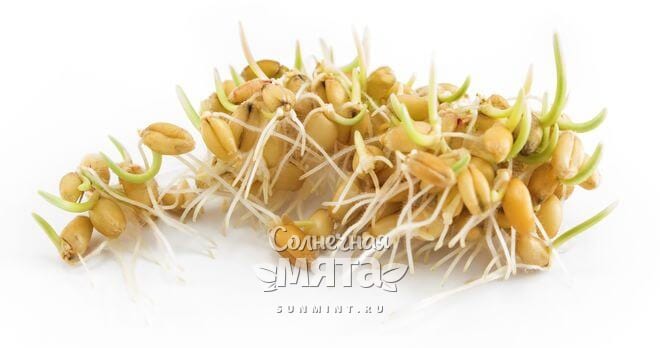
Sprouts also contain high amounts of bromine.
You can leave sprouts 1-2 mm long, or you can grow greens from these grains and then add them to smoothies and salads. Moreover, the mineral we are interested in tends to concentrate precisely in the green part of plants. And our simple actions improve the absorption of bromine.
Legumes - lentils, beans, peas, peanuts - are also capable of accumulating this substance. Products that contain bromine: nuts, especially walnuts, as well as almonds and hazelnuts purchased in shell. By the way, nuts, like cereals, should also be eaten soaked in water.
This is especially true if they are not a fresh harvest, but have been stored for quite a long time. Water destroys the protective inhibitors of nuts and releases a storehouse of “benefits” for our body.
Above, I mentioned the natural location of bromine, so it is logical that we can obtain this trace element from seaweed, as well as from natural sea or unrefined rock salt. These are natural sources of bromine.
It is noteworthy that people living by the sea replenish their reserves of this mineral every day while walking along the beach or along the promenade, simply by inhaling sea air.
As you can see, bromine in the diet is not such a rare phenomenon. I am sure that the daily menu of a raw foodist or vegetarian contains a sufficient amount of this substance.
Back to contents
Examples of reactions in which bromine water becomes discolored
All of them are of high quality, that is, accompanied by a tangible effect.
The first case is with an alkene, but other analogies can also be drawn:
CH2=CH2 – Br2 → Br – CH2–CH2 – Br
The second one is already with alkyne:
CH≡CH + Br2 → CHBr=CHBr
There is another indicative situation and it is connected with ethylene, which must be passed through the liquid in question; then we get:
CH2=CH2 + Br2 → CH2Br–CH2Br
Alkadienes differ only in that they have a pair of double bonds at once, but the interaction will be the same as in example No. 1. It's the same story with multiples and triples.
What stands out is the connection through which isoprene, technical calcium carbide, aluminum and chromium nitrates are often passed. This is an excess of bromine water, the formula of which is written as 3Br2, and the combination with it leads to a variety of results, including precipitation and the formation of derivatives.
What if it's not enough?
Bromine is excreted from the body along with urine. Therefore, with the abuse of diuretics
and with strict unbalanced diets, a lack of bromine in the body may occur.
Diets that work
Bromine deficiency is not the only consequence of unbalanced diets. In order not to harm your health and bring your weight back to normal, you need an effective diet prescribed by a specialist. Find out how diets are prescribed.
Bromine deficiency is characterized by insomnia, slow growth, decreased hemoglobin levels in the blood, and disruption of the reproductive organs.
Bromine is considered a toxic substance, the excess of which in the body can lead to serious consequences. A dose of 35 g
is considered lethal . Therefore, self-administration of drugs containing bromine can only be carried out under the direct supervision of a doctor.
Signs of excess
Excess bromine usually occurs with an overdose of drugs containing it, which is extremely undesirable. Signs of excess bromine include :
- the appearance of inflammation and rashes on the skin;
- depression and general weakness;
- problems in the functioning of the digestive system;
- regular runny nose and cough that are not related to colds and viruses.
Bromine compounds are low-toxic, while elemental bromine is a strong poison . Even a slight excess of bromine in the environment can cause constant dizziness, irritation of the mucous membranes of the respiratory organs and eye membranes, and nosebleeds. If bromine concentrations are significantly higher than normal, respiratory spasms and even death due to suffocation are possible. The lethal dose for humans is 3 g of bromine.
Diseases caused by excess bromine
Bromine is a toxic substance and in large doses leads to death. Bromism is a disease that develops with a long-term excess of bromine salts in food. Manifested by lethargy, muscle weakness, slurred speech, decreased cognitive function, bronchitis, diarrhea, skin rash, weight loss. Bromoderma is a skin rash in the form of cyanotic acne or purple plaques on the face, legs, buttocks, and sometimes throughout the body. In acute poisoning, “bromide stun” is observed with weakened attention, gait disturbance, and difficulty speaking.
Causes and signs of deficiency
Bromine is supplied in sufficient quantities with food products. Therefore, deficiency is a rare phenomenon and is practically not observed in isolated form. As a rule, a deficiency occurs in diseases of the digestive system, when the absorption capacity of the intestine is impaired. At the same time, along with bromine, the absorption of other microelements and vitamins deteriorates.
Relative deficiency is sometimes formed under intense mental and psycho-emotional stress. Br deficiency is accompanied by causeless irritability and anxiety, and insomnia. Patients complain of memory impairment and absent-mindedness.
The acidity of gastric juice decreases, food digestion worsens, and anemia develops. In men, deficiency leads to erectile dysfunction, in women - to termination of pregnancy. Children may have developmental delays.
Methods for purifying water from bromine
Each of them represents a complex of sequentially carried out effects: aeration, removal of carbon dioxide, filtration, regeneration and is implemented on specialized equipment. Therefore, we will consider them briefly.
- treatment with an adsorbent, for example, a strong basic anion exchanger, AB-17-8 resin - relevant for wastewater from pharmaceutical production;
- introduction of iodides followed by absorption by aluminum hydroxide-based loading - suitable for underground sources also rich in iron and manganese;
- complex effect - with conditioning, the use of granular cation exchangers (sulfo- and carboxyl), anodizing, passing through a layer of activated carbon - an option for liquids that will be used for household purposes and for drinking and cooking.




